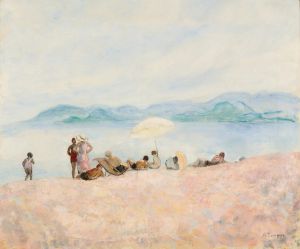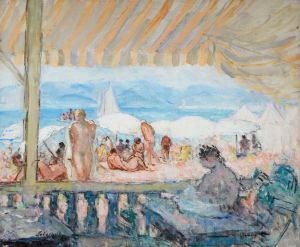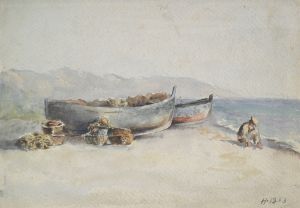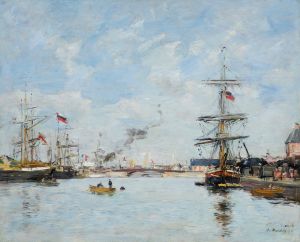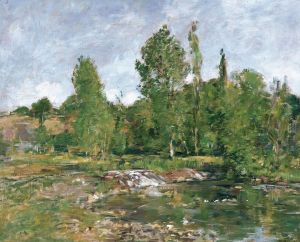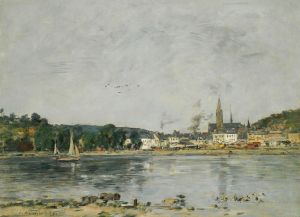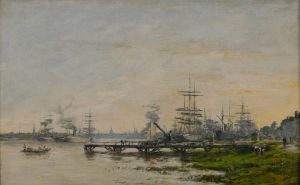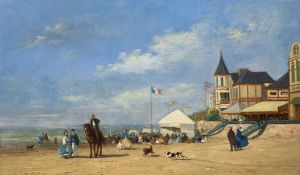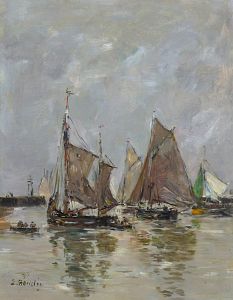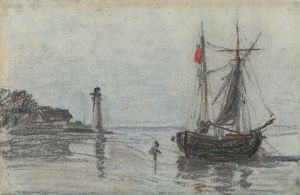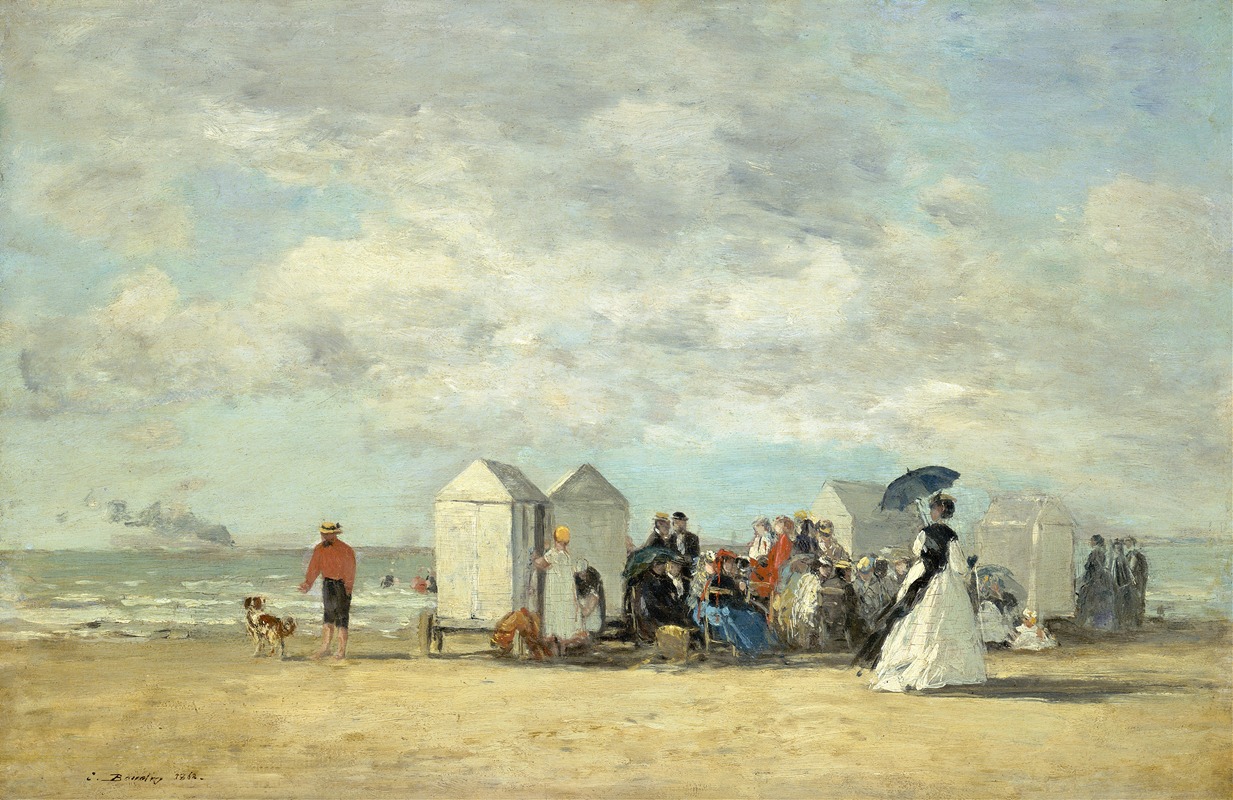
Beach Scene
A hand-painted replica of Eugène Boudin’s masterpiece Beach Scene, meticulously crafted by professional artists to capture the true essence of the original. Each piece is created with museum-quality canvas and rare mineral pigments, carefully painted by experienced artists with delicate brushstrokes and rich, layered colors to perfectly recreate the texture of the original artwork. Unlike machine-printed reproductions, this hand-painted version brings the painting to life, infused with the artist’s emotions and skill in every stroke. Whether for personal collection or home decoration, it instantly elevates the artistic atmosphere of any space.
"Beach Scene" is a painting by the French artist Eugène Boudin, who is widely regarded as one of the most important precursors to the Impressionist movement. Boudin, born in 1824 in Honfleur, France, is celebrated for his depictions of coastal landscapes, particularly scenes of beaches and seaside leisure. His work often captures the interplay of light, water, and sky, showcasing his mastery in rendering atmospheric effects.
The exact date of "Beach Scene" is not definitively documented, but it is consistent with Boudin's broader body of work, which frequently focused on beach scenes during the mid-to-late 19th century. Boudin was among the first French painters to take his easel outdoors, a practice known as "en plein air" painting, which allowed him to study and depict natural light and weather conditions with remarkable accuracy. This approach influenced many Impressionist painters, including Claude Monet, who admired Boudin's work and considered him a mentor.
"Beach Scene" exemplifies Boudin's characteristic style, featuring a tranquil coastal setting populated by figures engaged in leisurely activities. The painting typically includes elements such as the sea, sky, and sandy shore, often with elegantly dressed individuals, reflecting the growing popularity of seaside tourism in 19th-century France. Boudin's attention to detail in depicting the clothing and posture of his figures provides insight into the social customs and fashions of the time.
The composition of "Beach Scene" demonstrates Boudin's skill in balancing human activity with the natural environment. His use of soft, muted colors and loose brushwork conveys a sense of immediacy and spontaneity, capturing the fleeting effects of light and atmosphere. This approach aligns with the Impressionist emphasis on capturing moments of everyday life and the transient qualities of nature.
Eugène Boudin's beach scenes, including "Beach Scene," played a significant role in the development of modern art. By focusing on ordinary subjects and experimenting with light and color, Boudin helped pave the way for the Impressionist movement, which would emerge in the 1870s. Today, his works are held in high regard and can be found in major art collections and museums worldwide.
Specific details about the provenance or current location of "Beach Scene" are not readily available. However, Boudin's paintings are widely exhibited, and his contributions to art history continue to be celebrated for their innovation and influence.






